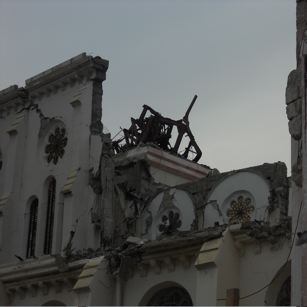 Six months after the 7.0 earthquake that devastated Haiti’s capital city and surrounding areas, killing more than 200,000 and displacing millions more, relief organizations have mobilized to bring hands-on volunteer teams to help rebuild the country.
Six months after the 7.0 earthquake that devastated Haiti’s capital city and surrounding areas, killing more than 200,000 and displacing millions more, relief organizations have mobilized to bring hands-on volunteer teams to help rebuild the country.
Immediately after the quake, relief teams who had quick access to supplies, medical experts and even airplanes were the ones to hit the ground running.
Take Jim Parker, for example. As pilot and owner of Caribbean Flying Adventures, this resident of the Dominican Republic was able to respond quickly after the earthquake to transport doctors and medical supplies.
“Little planes with four to six seats can take 500-700 pounds of supplies, plus a passenger,” says Parker. “A lot of us private pilots wanted to help out, but the coordination wasn’t centralized. This is stuff of Biblical proportions we’re talking about. I got involved with folks in Santiago and in Florida got involved, and in a matter of weeks we were swapping resources.”
Other NGOs already had people on the ground in Haiti, and were able to spring into action almost immediately. Airline Ambassadors, a non-profit organization comprised primarily of travel industry professionals, has been working in Haiti since 1996. [Full disclosure: Peter Greenberg sits on the board of Airline Ambassadors.]
A partnership with United States Army Southern Command, got Airline Ambassadors’ president and founder, Nancy Rivard, quick access to airplanes long before commercial flights could get clearance. “We got 17 carriers into Haiti,” says Rivard. “Our first mission was medical, in which we brought in doctors, and then we brought in 3 million pounds of aid.”
Rivard also points out that she went to American Airlines to obtain additional aircraft, to no avail. United Airlines, however, gave Airline Ambassadors seven planes to fly into the ravaged areas.
Learn more about the quake in our Natural Disasters section.
Today, Airline Ambassadors continues to coordinate monthly missions in Haiti for members, providing support to ongoing programs with Haiti Street Kids, Trinity Music School, the L’Athletique soccer program, and New Life Orphanage. Click here for more information.
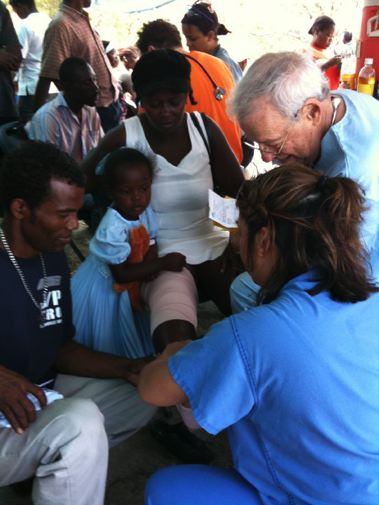 Other responders had even bigger resources at hand. Dr. James Sears, who appears on the CBS daytime talk show, The Doctors, raced to Port-au-Prince with his TV colleagues and a camera crew to help out.
Other responders had even bigger resources at hand. Dr. James Sears, who appears on the CBS daytime talk show, The Doctors, raced to Port-au-Prince with his TV colleagues and a camera crew to help out.
“Three years ago, we had agreed that the next time a disaster struck of the proportions of Hurricane Katrina or a tsunami, we would go,” says Dr. Sears, a pediatrician with a private practice in Southern California. “I was glued to the coverage on CNN when Anderson Cooper and Dr. Sanjay Gupta arrived on scene. The next morning, I told our producer that we had to go.”
With teams of people working around the clock, The Doctors production crew was quickly able to secure more than 7,000 pounds of medical supplies, including antibiotics, pain medication and sutures, to bring to Haiti.
“We got word that we were going on Monday evening, and we left that Saturday,” he says. “We hit the ground running. We flew into the Dominican Republic, and from there we embarked on a 10-hour drive to Port-au-Prince on a tiny little bus.”
At that time, medical teams and news crews were setting up camp wherever they could find space. Dr. Sears recalls getting out a truck, being pointed to a tent, and immediately going to work.
Learn more about Volunteer Vacations & Disaster Assistance in Haiti.
“Whether it’s in the ER or Haiti, when you’re in a tense situation, you need to help focus on the station and not get emotional. It felt like we were in a war.”
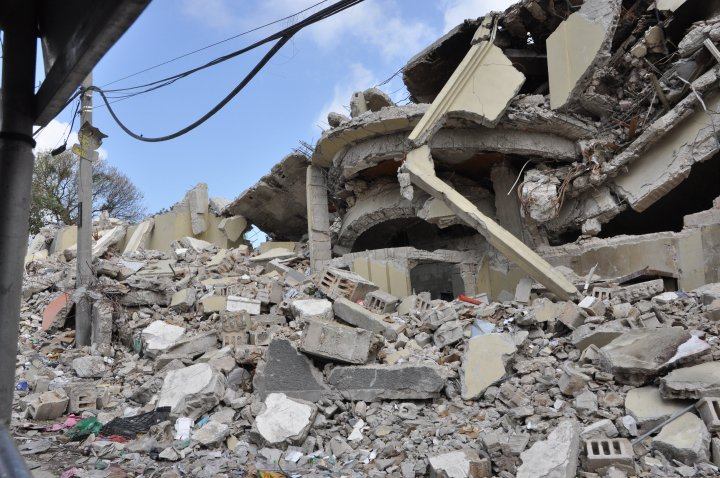 But without network TV production team to facilitate the process, helping Haiti’s recovery wasn’t nearly as straightforward for other prospective volunteers. Cora Maglaya, a California-based physical therapist, searched for weeks to find a relief organization that was accepting volunteers with her skills.
But without network TV production team to facilitate the process, helping Haiti’s recovery wasn’t nearly as straightforward for other prospective volunteers. Cora Maglaya, a California-based physical therapist, searched for weeks to find a relief organization that was accepting volunteers with her skills.
“The Red Cross and Doctors Without Borders are looking for doctors and nurses, not rehab folks,” says Maglaya.
She ultimately connected with a Island Impact Ministries, a faith-based non-profit in Florida that had already been working in Haiti for a year. The organization already had its own trucks on the ground and a medical tent that was well-protected by the military.
Learn more in our Volunteer Vacations section.
“The nationally recognized organizations like the Red Cross have overtaken the hospitals, but thousands were still stranded in the tent cities that can’t get access to much-needed healthcare,” says Maglaya. “This is why smaller relief organizations are a critical part of the emergency disaster plan.”
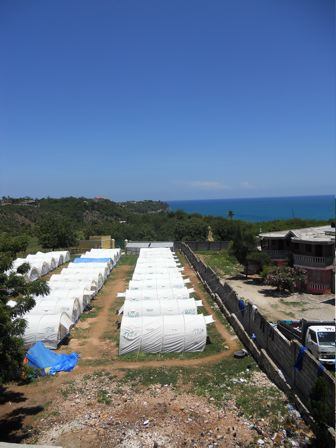 But simply signing onto an organized team and raising funds to purchase her ticket wasn’t all she had to coordinate. “I called Spirit Airlines to ask how I could bring 40 pairs of crutches and $500 of medical supplies. They said I couldn’t. I spoke with five different people. I begged, I pleaded. But there was an embargo on additional bags.”
But simply signing onto an organized team and raising funds to purchase her ticket wasn’t all she had to coordinate. “I called Spirit Airlines to ask how I could bring 40 pairs of crutches and $500 of medical supplies. They said I couldn’t. I spoke with five different people. I begged, I pleaded. But there was an embargo on additional bags.”
Next, Maglaya tried contacting the Greater Los Angeles chapter of the Red Cross to see if they could help her bring supplies to Haiti, but they had no suggestions of who she could contact or even how to find out where its teams were on the ground.
“When I heard about Island Impact Ministries, it was a matter of making one phone call to get me on a team. That would never happen with a national or worldwide organization,” says Maglaya. “I respect the fact that people are cautious about donating to a shady organization, but I couldn’t even get the Red Cross to communicate with me. Their only option for people who want to help is to donate money.”
In the end, she brought one bag of supplies but found that others had brought stashes medical equipment like crutches and canes when she arrived. “My Haiti medical mission trip was a BIG success,” she wrote in a blog after her week-long trip. “It is impossible to measure how many people we reached….[but] I exceeded my own expectations providing medical care to those lost in the system.”
Learn more about Caribbean Travel here.
For prospective volunteers who are looking to travel to Haiti, Alexia Nestora, a consultant for the voluntourism industry, recommends the following:
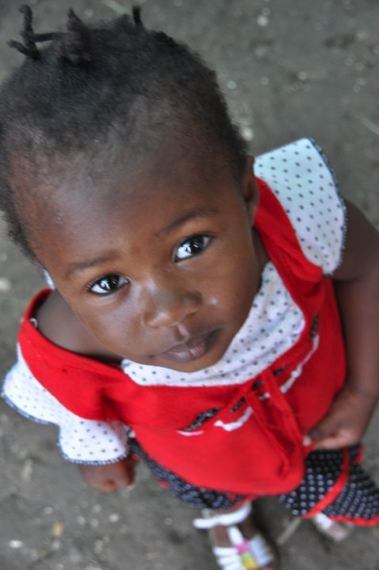 “Don’t go there by yourself, of course, but there are certain questions you need to ask of your volunteer group,” explains Nestora. “When you’re going into a country that just had a disaster, you need to find out what is their disaster plan. Do they have staff on the ground? Many volunteer vacation companies are more like recruiting agencies, and will send you to their local partners. That’s who you need to investigate.”
“Don’t go there by yourself, of course, but there are certain questions you need to ask of your volunteer group,” explains Nestora. “When you’re going into a country that just had a disaster, you need to find out what is their disaster plan. Do they have staff on the ground? Many volunteer vacation companies are more like recruiting agencies, and will send you to their local partners. That’s who you need to investigate.”
In terms of helping Haiti, specifically, Nestora recommends asking for a detailed 12-month plan. “Beware of ‘heart-string projects.’ Find out where the program fits into the grander plan,” she advises. “For example, it’s a really easy sell to bring people to work with children. But you’re dealing with kids who have had had very traumatic experiences and short-term visits can trigger abandonment issues. It’s much better when a volunteer program is part of a larger curriculum—when you’re brought in to teach a certain segment of a course rather than showing up and playing for an afternoon or a few days.”
She continues, “Volunteers don’t necessarily need to be trained, but going into a place like Haiti there are certain skill that are needed. If the organization has a clear projection of where the project is going, they’ll have a clear plan on whether they need electricians, gardening, painting, etc. That way, volunteers can come prepared to work.”
For a list of great organizations, visit our Voluntourism page.
Nestora notes there is no international accreditation program to help volunteers suss out which companies are legit. However, she says, “you can use www.charitynavigator.com to see the basics,” she says. “It doesn’t necessarily matter if a volunteer company is for-profit or not-for-profit, but it does matter how much of their money goes directly into the program.”
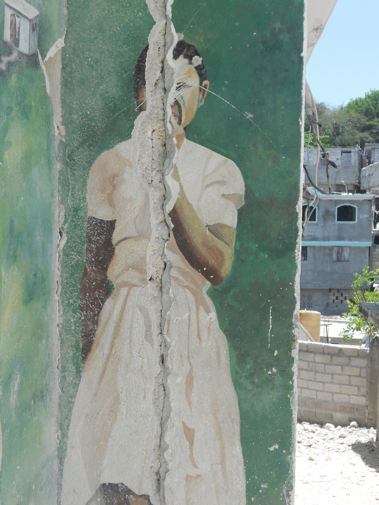 Jimmy Toussain, founder of the Colline Foundation, which operated a school in Haiti until it was destroyed in the earthquake, is planning to bring in volunteer groups beginning in August. He and his foundation partner are of Haitian descent, and another partner is of Haitian parents, and his project coordinator, Christopher Gauthier, was raised in Haiti. Together, the group spent a significant amount of time reaching out to contacts on the ground to see how they could help.
Jimmy Toussain, founder of the Colline Foundation, which operated a school in Haiti until it was destroyed in the earthquake, is planning to bring in volunteer groups beginning in August. He and his foundation partner are of Haitian descent, and another partner is of Haitian parents, and his project coordinator, Christopher Gauthier, was raised in Haiti. Together, the group spent a significant amount of time reaching out to contacts on the ground to see how they could help.
What they found was shocking.
Although he declined to point fingers at any particular organization, Toussian describes programs in which volunteers come in to build temporary housing. But once the group departs, the building is broken down for the next team to reconstruct. Scams like this are not uncommon in times of crisis, as unscrupulous types prey on those with the best intentions.
Note that there is currently a two-year building moratorium in Port-au-Prince, as leaders work in developing new building codes. Be wary of any volunteer company that promotes rebuilding homes or schools in the capital city as part of its mission.
Volunteers also need to ask questions about what kind of security will be available on the ground.
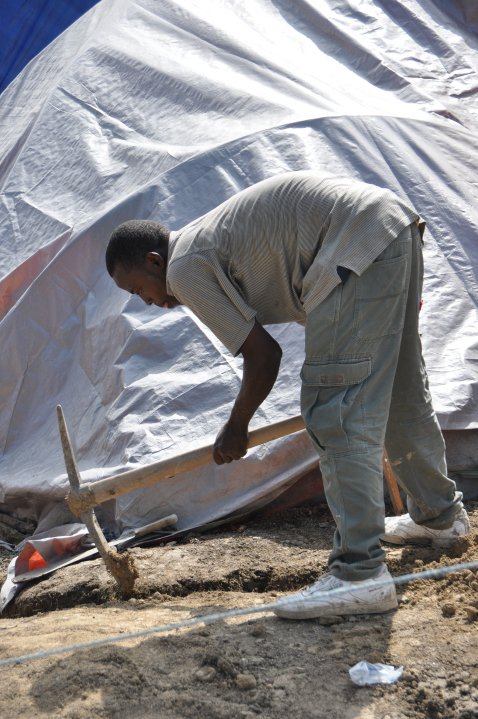 Long before the earthquake the State Department posted alerts about the impoverished country, noting “There are no ‘safe’ areas in Haiti.” Surges of violent crime are generally committed by Haitians against other Haitians, but the State Department recognizes that several foreigners and U.S. citizens have been victimized over the years. Since the earthquake, gangs have begun to regroup, there has already been a rise in violent crimes like carjacking, robbery and kidnapping.
Long before the earthquake the State Department posted alerts about the impoverished country, noting “There are no ‘safe’ areas in Haiti.” Surges of violent crime are generally committed by Haitians against other Haitians, but the State Department recognizes that several foreigners and U.S. citizens have been victimized over the years. Since the earthquake, gangs have begun to regroup, there has already been a rise in violent crimes like carjacking, robbery and kidnapping.
The Red Cross, which has implemented a strict curfew on its own staff, continues to warn travelers about going to Haiti without any organized plan of action. Volunteer groups should have some kind of security, as well as a translator and/or driver to navigate tricky roads and potentially dangerous interactions.
The Colline Foundation, which will bring its first group in August 9-13 has bilingual staff members and has obtained private guards through the local police commissioner. Participants will be housed in a compound that’s part of a 3-acre orphanage, located near the airport, and will be bused to and from volunteer sites. The organization is inviting participants to volunteer at a summer camp in Leogane, and to assist with non-medical patient management as part of its medical mobile unit.
Don’t miss our Travel Safety & Security section.
Elevate Destinations, which offers community programs worldwide, is organizing four upcoming trips to Haiti.
 Volunteers can travel to Jacmel to help complete building a community school, August 15-29 and November 21-December 5; a program in Port-au-Prince will work on rebuilding the St. Joseph’s Home for Boys, August 15-22 and November 21-29.
Volunteers can travel to Jacmel to help complete building a community school, August 15-29 and November 21-December 5; a program in Port-au-Prince will work on rebuilding the St. Joseph’s Home for Boys, August 15-22 and November 21-29.
Elevate has partnered with St. Joseph Home for Boys, which operates three schools in Haiti, and with its North Carolina-based fund-raising arm, Hearts for Haiti, and with Make a Difference Now, an Idaho non-profit that works to empower orphaned children.
Andrea Atkinson, executive director of Scopa Group, a consultancy that is working with Elevate Destinations, has been on the ground in Haiti to organize the upcoming trips. Groups will be transported by van with a guide, and while the hotels and schools are already staffed with security, they are working on obtaining additional security.
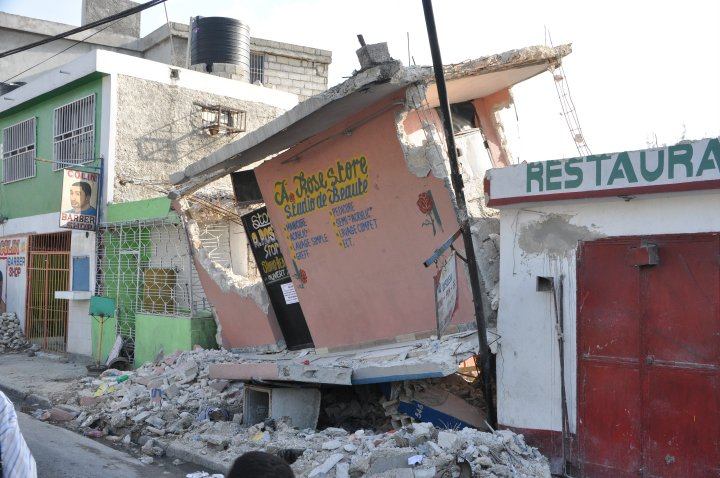 “We’re offering both a basic and an upgraded trip,” says Atkinson. “The basic trip will have volunteers staying at St. Joseph, while an upgraded package allows people to stay in a hotel nearby—the biggest perk there is that it has air conditioning, which is a big deal when you’re talking about Haiti in August.”
“We’re offering both a basic and an upgraded trip,” says Atkinson. “The basic trip will have volunteers staying at St. Joseph, while an upgraded package allows people to stay in a hotel nearby—the biggest perk there is that it has air conditioning, which is a big deal when you’re talking about Haiti in August.”
A normal day will involve construction from 8 a.m. to noon with volunteers encouraged to take as many breaks as they need, followed by lunch, work from 1:30 p.m. to 4:30 p.m., and then free time to interact with the kids. All groups will be taken to see devastated areas, and depending on the length of the trip, join day trips to a national park and to the beach.
Lastly, if you want to help but still experience a vacation, Royal Caribbean has dedicated its November 14 sailing on the Liberty of the Seas to Cruise4Haiti. The cruise will be an official Airline Ambassadors mission, with president and founder Nancy Rivard on board. The ship will be carrying pallets of supplies, including medical necessities and food, and for each passenger on board, $75 will go directly to Airline Ambassadors and For Haiti with Love, which hosts missions to Haiti’s north coast.
Book through Airline Ambassadors at www.airamb.org, and passengers will receive a $240 discount on the cruise, dropping the starting rate to $634 per person. The seven-night cruise will depart Miami and sail to St. Maarten, San Juan, and to Royal Caribbean’s private beach on Haiti’s north coast, Labadee.
Passengers will be invited to participate in a humanitarian stop at an orphanage in San Juan, and to help deliver the pallets in Labadee. Other potential activities may include visiting the headquarters of For Haiti with Love, a bonfire benefit concert on the beach, and making gifts to distribute on land.
By Sarika Chawla for PeterGreenberg.com.
Related links on PeterGreenberg.com:












